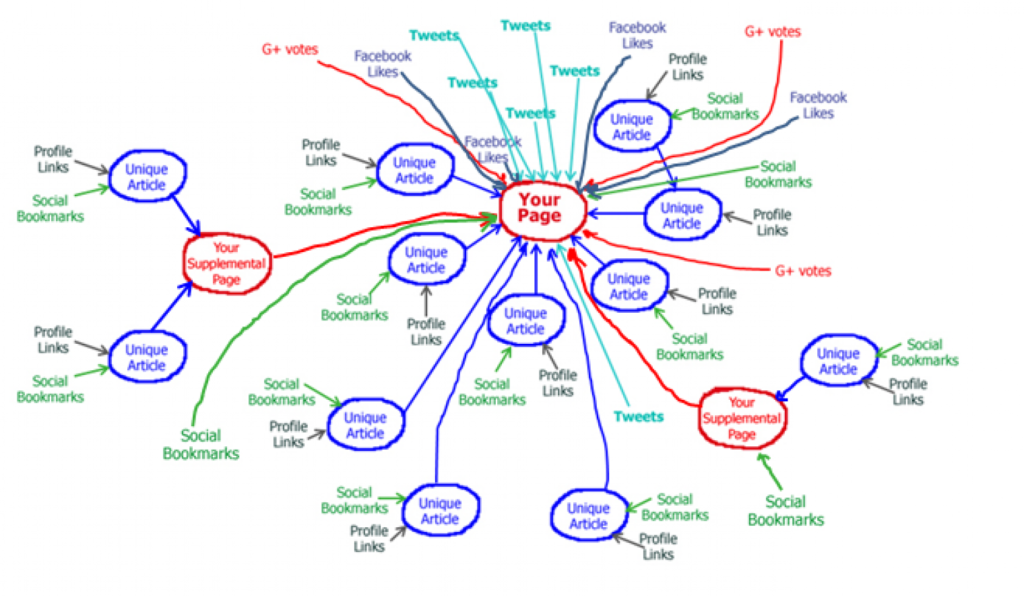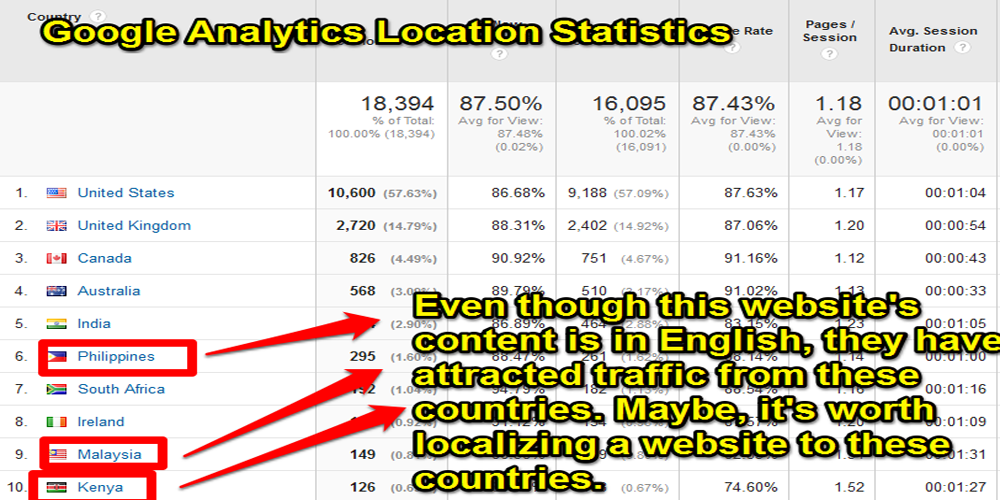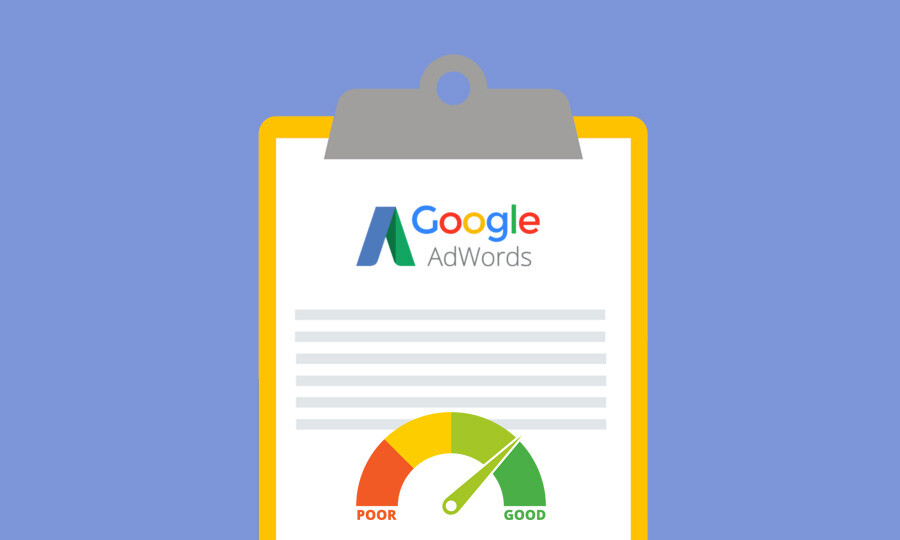High Quality Links in 2019

Defining High Quality Links in 2019 Links are a way for users to get relevant information on the internet. They are also still a key ranking factor for your web pages. Of the 200+ known ranking factors, links share the top three spots with good quality content and RankBrain. However, having links is not enough. Their quality matters. Google takes into account not only the number of backlinks a web page has but their quality as well. Sadly, some SEOs, in the rush to make their sites appear popular to search engine crawlers, invest in low-quality links. High-quality link building, however, is the only way to get desirable results. Chasing the quickest and cheapest results, some SEOs resort to the wrong methods of generating backlinks. These are often blackhat techniques that could lead to Google penalties and destroyed reputations. What’s surprising is that even SEO agencies employ poor link-building techniques. A 2018 study conducted by Assertive Media of 230 UK link-building agencies found that nine out 10 used unscrupulous techniques.
Benefits of Local SEO & Importance to Business

Benefits of Local SEO and the Importance to Business Local SEO involves improving a website’s search rankings for search queries that are tailored to a specific area. For example, if a user wanted to search for hair stylists in their area, they may append their area to the search query, and all search results would provide links to hair stylists based or near to the area found in the search query. However, users no longer need to specify a location in their search queries. With the rise of artificial intelligence, Google can now automatically detect the current location of the user and serve websites that are near or based in the same area as the user. This makes lookups much quicker for the user, and can be of instant benefit to both the user and the business, since they are matched with each other in a seamless manner. According to HubSpot, 97% of those surveyed reported searching online for local businesses. Benefits of Local SEO By integrating local SEO into their search strategy, local businesses can increase both their sales and customers by reaching customers who regularly research for local businesses via the Internet. The crossover of mobile SEO and local SEO has also been a growing trend; users are now researching businesses while on the go, commuting, or waiting in queues, and so, their use of mobile devices is essential for this. According to Google’s statistics in 2016, 30% of mobile searches were related to a location. This staggering statistic shows the power of local SEO in today’s rapidly changing landscape. Ensuring you have a mobile optimised website is key, since the majority of users will be using their phones when visiting your website. Google display listings of businesses in the right-hand side of search results (when on a Desktop) and often integrate local listings into search results when users are searching via a mobile device. These listings provide details on matching businesses in the area, as well as opening hours, telephone numbers, and photographs of the establishments. See below on how to get your business listed, using Google MyBusiness. Local SEO Top Tips If you’d like your business to have its own listing, you should sign your business up to the Google MyBusiness page, which allows you to establish your business as a local entity on the MyBusiness listings, and will be considered for ranking whenever a user searches for a business in your domain. Users will also be given the chance to rate their experiences with either the listed business, and of course, having a high rating accompanied by glowing customer reviews will always be a fantastic asset to any local business in the listings. You should also contain your business’ local area’s name within the content of your website’s main page, meta descriptions, and blog posts. This way, search engines can easily identify the area your business is based in, and will be able to serve your website in search results accordingly. You can also use schema mark-up to further emphasise the location of your business, and to make sure search engines index your content with the location in mind. Conclusion The rapid rise of location-based search queries is not just a growing trend, it is also an incredibly profitable one, which all local businesses should benefit from. According to Google in 2016, 28% of searches for a local-based business resulted in a purchase. By placing your business on the local search results and Google MyBusiness listings, you are improving your chances of continued growth and success for the long-term. Local SEO is not just a trend, it is an integral and fundamental aspect of SEO that is here to stay.
SEO for Therapists and Counsellors

How to Improve SEO for Therapists and Counsellors “Marketing is a key area that tends to intimidate the most. Therapists and counsellors don’t like to be “salesy” in any way. To make it easier for you, don’t see marketing as a difficult task of trying to get people to give you money. But rather, see marketing in terms of developing relationships” — Gordon Brewer. Here’s the truth: You need to market your practice like a business person. If you need help from a trusted digital marketing expert, book a free consultation with Direct Submit today. If you’re the best therapist or counsellor in your state but have no patients, what’s the point? Life is full of ups and downs. People undergo physical and mental stress at home and work. Mental stress or illness can affect how people relate to their family members and co-workers, according to BetterHealth Channel of Victoria State Government. Many times, people need help to build better relationships with their family members and co-workers — and to live a better life. As a therapist or counsellor in private practice, you can help as many people as possible to understand their unique situations and how they can improve their lives. However, as noble as your intentions may be, you still struggle to get as many clients as you want. This is a difficult situation that you need to address. Getting more clients to your therapy business means you can help more people and make more profits from your practice. Perhaps one source you have not given a lot of thought to is search engines. Here’s why you should pay more attention to it: search traffic converts, on average, 10X better than traffic coming from social media platforms. In fact, over 94% of people use search engines to look for information online. The truth is that many of your potential patients use search engines when looking for the right professionals. For more information on how Direct Submit can help your business attract new clients, call us today on 0845 2722350 or visit the Direct Submit website.
International SEO On Your Website

How to Carry Out International SEO On Your Website Most online content is in English, with very little actually being translated into other languages. This is saying something since the two most spoken languages in the world are Mandarin and Spanish. English is the third most spoken language in the world, and funnily enough, the majority of online content is in English. With rising populations across the world, by 2020, the audience for your writing will be huge – all from different countries. If you have a local business, then perhaps, tailoring your website to other languages may not be necessary, but if you have a business that has the potential to sell to anyone in the world – international SEO is essential. You need to invest in getting your content translated because a couple of years from now, a lot more business owners will be doing the same. You might even discover that a lot of your target audience is in other countries. Some of the most successful businesses have the most users in South America or Asia. In this guide, we’ll take a look at the fundamentals of International SEO: including, translating your website, doing research on which countries to target most and much more! A great SEO & keyword tool to aid you in undertaking any SEO project, particularly when undertaking keyword research is Link Assistant. Research The Top Countries You Should Be Targeting Keyword Research In Other Languages For English speakers, you are targeting a certain set of keywords with your website. It might be “birthday cards for fathers” or “luxury blinds”. These keywords target the English language only, so the most traffic you can get is from the UK, possibly the US, Australia, and Ireland. These countries provide small populations, in contrast with the populations in other countries, which far exceed the population of the UK, US and Australia put together. According to Bablic, did you know that 73% of people don’t search the web in English, but in their own language? So, with English, you are targeting at best, only 37% of your potential audience! Don’t let the other 73% of people go into the drain. All you have to do is find out which countries are actively searching for your keywords in other languages. For example, if you sell luxury blinds in the UK, who says you can’t sell them in Spain or France? There might be huge potential in those markets. You need to find out. To do this, simply translate your list of keywords into a popular language, like Spanish or French. Plug your translated keyword into the Google AdWords Keyword Planner. You can then find out the number of monthly searches, and if it’s worth your time. Use this as a metric: If there are more people searching in that language, than in English – it’s a must to target that language! Even if a couple thousand monthly searches is all there is, they still are all monthly potential customers, who could find your site. Google Analytics To find out other countries which may be worth targeting, you can check your website’s Google Analytics statistics. Some customers in other countries (Sweden, for example) often search in English, if they want more choice in the products on offer, rather than just search in their country’s language and get less choice. However, those few customers are very rare. According to Bablic, 56% of consumers say that browsing in their own language is more important than price. However, these customers might indicate which countries are highly interested in your products. To find out where there are high concentrations of interested customers, simply log-in to your Google Analytics account and click the Audience tab. Click on “Geo” and then “Location”. You can then see which countries visitors are located. Whilst the UK and US might have the highest concentrations, you should check the countries with other languages. Maybe Brazil or Portugal have a few hundred users coming to your website every year, so that means, that you should investigate Portuguese as an option for a language to translate your website into. This method is not definitive though, it just gives a rough idea of potential countries or locations you could target. Translate Your Website Human Translation One of the ways you can translate your website is through human translation. This ensures a professional and thorough translation which is very effective for bringing foreign customers to your website. Even if you don’t have the money for translating your website to many languages, even using human translation for one language is excellent. After you’ve done your research on which countries need targeting, you can see which language could bring the most gain. If you don’t want to get a country code top-level domain name for your website, you can allow your users to switch between languages, all on the same website. If you have translated your content, and want to submit it to your website, you should use a WordPress plugin called Polylang. You can add your translations to the plugin. Let’s say you want to translate your website into three other languages. The plugin works so that for every page you create in WordPress, there are three other empty pages created (one for each language) where you can add the translated text into. Polylang will then combine all those translated pages together, and create a translated version of your website. When a Spanish customer arrives at your site, the website will display in Spanish. Using Google Translate While human translation may not be an option for everyone, there is a free alternative. For example, you could invest in human translation (which is of higher quality than robotic translation) for one language or two, depending on where most of your potential customers are. However, if you just want a quick and fast way to provide translation for your website, Google Translate is an option. Its translations aren’t of a particularly high standard, though, so be
Choosing the Right Key Phrases in SEO

We’ve just had an email from a new client asking about Choosing the Right Key Phrases in SEO and the process of deciding which key phrases they should target. Whilst we will be working closely with the client to determine the most appropriate phrases for the project, we thought it a good idea to post a summary of the process. Key Phrase Analysis Key phrase analysis is used in SEO to help identify find the correct phrases to optimise a website for. These phrases identified are then called ‘key phrases’. Direct Submit Internet Marketing Services can help you identify which words and phrases are within your reach, and which are most likely to generate an increase in traffic to your site from visitors who are likely to do business with you. Deciding on the right Key Phrases for your business is sometimes easy – you know which key phrases your business needs to be found with. However, for many businesses deciding on the right key phrases is a difficult process. Identifying Key Phrases Effective keyword research involves the combination of several methods of investigation including; » Talking to the client to ‘brainstorm’ key phrases they feel relevant » Researching the competition & investigating industry related information » Employ key phrase search tools There are a number of key phrase research tool available, many attract a cost, and then there are a number of free key phrase research tools. These tools include SEMSCOOP, which we at Direct Submit are currently evaluating. These types of software will typically provide the number of estimated searches per month, competition levels, opportunity for long tail keywords and much more. If you were specifically looking towards using AdWords then – assuming you have an account with Google you can use their AdWords specific key phrase research tool. Key Phrases & Website Optimisation Keyword research and keyword analysis (or Key phrases) are a crucial component in effective search engine optimisation and internet marketing campaigns. Your keywords need to be found within the body text of your website, in various headings and images, within meta tags and descriptions and page titles, and within external links pointing to your website. Some of the issues you need to be aware of include targeting of phrases that are too difficult or to competitive. On the other hand, targeting phrases that your potential customers aren’t searching for is pointless and won’t help make a success of your online business. Key phrase selection is an exhaustive process which forms the basis of any successful search engine optimisation or digital marketing campaign. If you need some help with ‘Choosing the Right Key Phrases in SEO’ call Direct Submit Digital Marketing Services can help you identify the right key phrases for your Internet project.
Digital Advertisers Using SEO

79% of Digital Advertisers Using SEO in Their Marketing New data reveals that 79% of digital advertisers are also using SEO as part of their marketing strategy in 2019. That’s one of many statistics included in WordStream’s report on the online advertising landscape in 2019. It’s important to highlight that particular point as it goes to show how valuable SEO is even to those who prioritize paid marketing channels. When asked what other marketing channels are being used to grow their business in 2019, other than digital advertising, SEO was the top choice amongst respondents. Content marketing, email marketing, and word of mouth marketing were also among the channels most used by digital advertisers. Here is a complete list of responses. Outside of digital advertising, what other marketing channels are you using to grow your business in 2019? > SEO – 79% > Email marketing – 66% > Content marketing – 60% > Word of mouth marketing – 47% > Direct mail – 32% > Event marketing – 26% > Guerrilla marketing – 9% > Affinity marketing – 6% > Telemarketing – 4% > Other – 1% “Advertisers tend to prioritise paid search over organic search because of the potential for immediate profit.” Here are some other key takeaways from WordStream’s report: 44% of advertisers are spending the same amount on Google search ads in 2019 as they did in 2018. 46% of advertisers are spending more on Google search ads this year. A quarter of advertisers do not use any form of display advertising. Nearly a third of advertisers are spending more on Instagram ads this year. Half of advertisers do everything in-house. The number one challenge for all types of advertisers is time limitations. Generating a profit is by far the most important goal for advertisers. For more data related to online advertising in 2019, see the full report here.
Google AdWords Score

Quality Score is the key to hacking AdWords. In this article we explain how Google calculates your Quality Score.
On-Page Optimisation & Off-Page Optimisation

On-Page Optimisation & Off-Page Optimisation If you’re new to the SEO game, it can sometimes feel as if you’re being inundated with jargon. “On-page” and “off-page” optimisation are just the kind of terms that you’re probably dreading, but understanding what they mean can help you plough on with your SEO research and get the most out of your reading. So what do these terms mean? And how can you make use of both forms of optimisation to promote your cause? Let’s take a look. On-Page Optimisation On-page optimisation refers to all of the SEO tactics that you can deploy on your website pages – pages that you’d like to see rise through the search engine rankings. It occurs wholly within your website. Title Optimisation. Title optimisation is one of the most important aspects of on-page optimisation, thanks to the weight that it holds both to users and search engines. You need a great title for your page so that visitors can instantly recognise what it has to offer them and whether they should click through. Meta Tag Optimisation. If you’ve ever typed a search into Google (who hasn’t?) and then looked at the description under the page title on the results page, then you’ve read a meta tag. The meta tag tells both users and search engines what the page contains so that they can determine if it is useful to them. It’s a kind of supplement to the title, providing extra information. Outbound Links. Outbound links are hyperlinks that link to pages on external websites. Creating outbound links does not generate better search result performance in and of itself, but optimised outbound links can create “meaning and value” as Google puts it, helping to improve overall page performance. In short, outbound links should contain anchor text that makes sense. Off-Page Optimisation Off-page optimisation refers to all of the things that affect the ranking of your pages that lie outside the boundaries of your website or website code. Link Building. Link building is one of the cornerstones of off-page optimisation. Link building is where you engage in active efforts to encourage external websites to link to your own. You can pay agencies to do this for you using their existing website network, or you can do it yourself by reaching out to relevant websites and asking for linked features. Social Media Marketing. Social media marketing involves efforts to generate revenue using social media platforms, like Facebook, Instagram and Twitter. Links from social media don’t count for much in today’s modern search algorithms, but social channels can be a great way to drive traffic to your website. Google and other search engines have started rewarding website pages linked to social pages with high user engagement (meaning lots of comments). Getting off-page optimisation right is vital for several reasons. In many respects, it is more potent than on-page optimisation over the long-term, although both must work in synergy to achieve useful results. So what have we learned? We’ve learned that the main difference between on-page and off-page optimisation is where the optimisation occurs: within the website itself for on-page, and off it for off-page. As Alexander Meerkat would say, “Simples.”
The Importance of Starting an SEO Project in 2019

Starting an SEO Project in 2019 As 2019 comes ever closer, as business owners and webmasters, we’re all thinking about how to market our website or business even more effectively in the coming year. We’ve seen many new and emerging trends dominate the financial markets in 2018, from cryptocurrencies to artificial intelligence, but we need to capitalise on those trends that will continue to help us succeed in a competitive world. Search engine optimization has always been an essential strategy to improving a website’s traffic, and it’s one to stay. Starting an SEO Project in 2019 In this guide, we’re going to take a look at why you should consider starting an SEO project in 2019, focusing on some new technologies to watch out for. Why SEO? Implementing an effective SEO strategy is crucial to maintaining a solid marketing foundation; by implementing the correct techniques, your website will gain credibility and trust with Google and other search engines. This trust will ensure your website will rank highly for competitive keywords, leading to an increase in traffic and sales, ultimately ensuring optimal growth in your consumer base for 2019. This means that once you have implemented your SEO project, and laid the foundations to a successful one, then the real majority of the work has been done, and all that’s left to do is to wait until your page starts ranking on search results. As users start to interact with your website and share your content, Google will notice the excellent user experience and start to rank your website higher. This is without you doing any other work, once the initial SEO project has been completed. If we compare this to social media marketing and other forms of traditional marketing, they require a constant source of time and money, whereas with SEO, the benefits are long-lasting and will continue to reward content creators and webmasters who create high-quality content. Increase Traffic for the Long-Term SEO can often be the deciding factor between the success and failure of a website. If a website doesn’t target the correct keywords or implement little to no SEO strategies at all, their pages will rank poorly on Google, leading to very poor traffic. Most websites report receiving the majority of their traffic from search engines, with only a small minority report receiving more traffic from social media. While social media marketing can bring traffic, this traffic is often short-lived, as the next news cycle or hit viral video takes over the feeds of users. We’ve all witnessed marketing campaigns that were incredibly successful in the short-term, but as soon as the campaign ended, the traffic began to dwindle, and dramatically so. This is due to the nature of the marketing campaigns. Investing in having a social media influencer promote your website or business can be important and lead to fantastic click-through-rates and traffic, but this traffic is short-lived, similarly to the social media news cycle. Therefore, SEO is essential help your website become successful, because by investing in SEO, you are investing in a long-term strategy, which will lead to traffic reaching your website continually. You can then invest in other short-term marketing techniques, since you’ll always have a new supply of traffic arriving at your website every day. With this traffic, you can further optimize your site by doing A/B testing, placing Call-to-Actions in your pages, and increasing lead generation. This can only be practiced in the long-term by ensuring that search engine traffic reaches your website. That’s why maintaining an excellent ranking on Google can ensure a constant supply of traffic. If you have “evergreen” content, that is, content that stays relevant throughout the year and is not solely seasonal, then you can ensure that traffic will always arrive upon your website regardless. Establish Trust with Google Gaining the trust of major search engines, such as Google, can be incredibly beneficial to your website’s online presence. While it can take several months, even a few years at times, for search engines to establish trust with a website, the trust built can be incredibly important for the website’s future endeavours in the marketing world. Trust is often built by ensuring users have an excellent experience on-site, aren’t distracted by popups, and generally don’t exit quickly upon arriving (this will affect your website’s bounce rate). This done through creating high quality, engaging content and having a mobile-responsive, well-designed website that offers an excellent user experience. Low quality websites that offer users a poor user experience will never build trust with search engines, and can never rank well in search results, therefore their websites will remain with poor visibility and have little growth. But why build trust in the first place? If you want your website to rank highly in search results, then building trust with search engines is an incredible bonus. Your site will often rank highly even without much backlinking efforts on your and your marketing team’s part, because this trust has been built over several months and years. Become an Online Influencer If your website gains the trust of search engines, then other competitors are more likely to notice your website and may want to form partnerships, where you both produce vlogs or content related to your niche and promote the others’ content; this can be a fantastic source of extra traffic, and new customers. While guest posting is strictly not recommended these days, other websites would be more than happy to drop a link to one of your articles in their social media posts. This partnership can be extremely beneficial to the livelihood of your website, and can bring customers from other domains too. Conclusion With the rise of social media and other forms of marketing, it can be tempting to forgo starting an SEO project, but for long-term traffic and success, SEO is crucial to achieving those. Here at Direct Submit SEO Services, we focus on helping websites kickstart SEO projects and focus on strategies that will help their website gain
Social Media Trends for 2019

How will the social media landscape change in 2019? Here are the key trends identified in the online search engine watch magazine that you need to consider for a successful marketing strategy. Social media marketing needs to be frequently adapted to the changing trends. The rapid pace that social media platforms evolve requires from marketers to be alert if they want to maintain successful tactics. 2018 ad been a busy year for all social media platforms. There were lots of positive and negative stories that had to do with their usage and it’s now time to review our social marketing strategies. The only way to survive in-between data breaches, emerging technologies and new platforms is to ensure that you: Understand your audience Review your social media marketing strategy Allocate time and budget to new tools and technologies Keep your focus on what works Do your best to build trust with your users in every campaign Social media marketing is going towards a stage that focuses more on ROI, new technologies and a trusting relationship between the brand and the customers.
